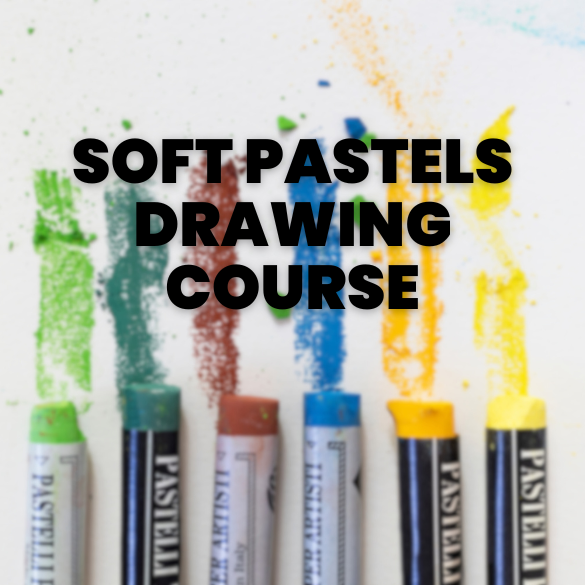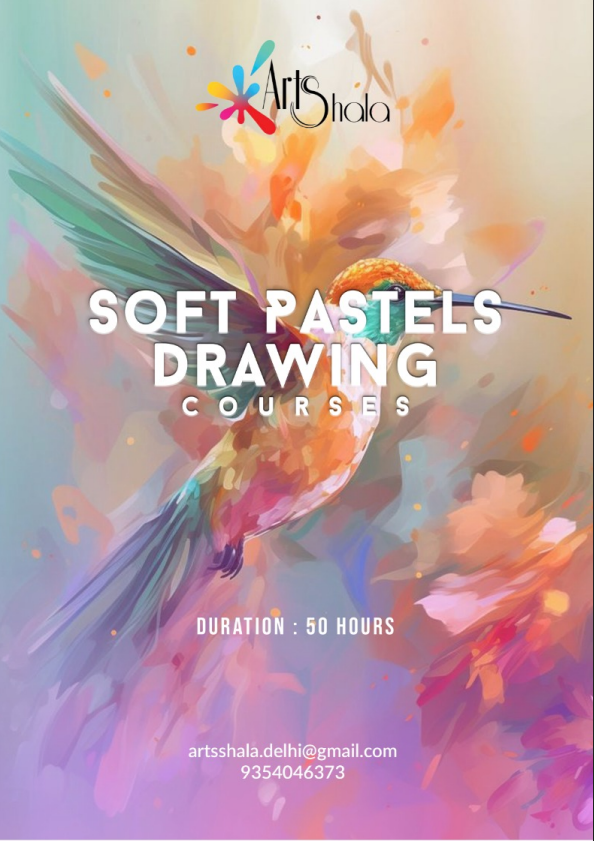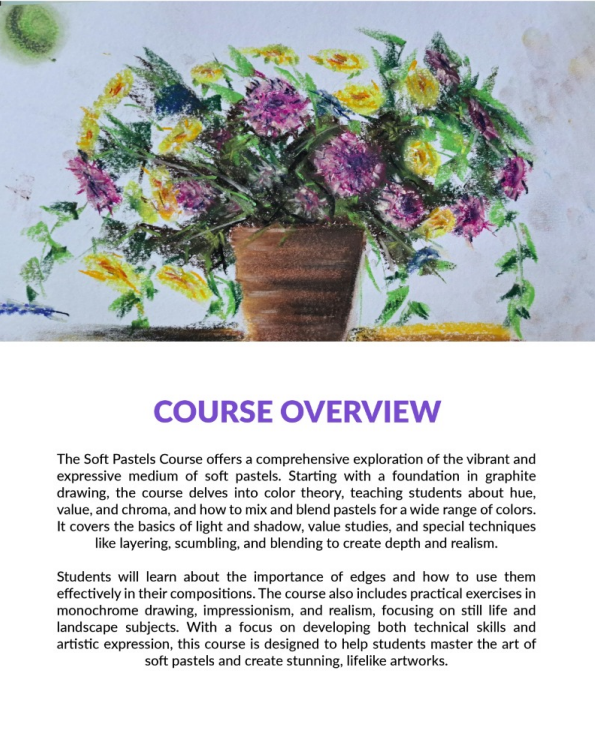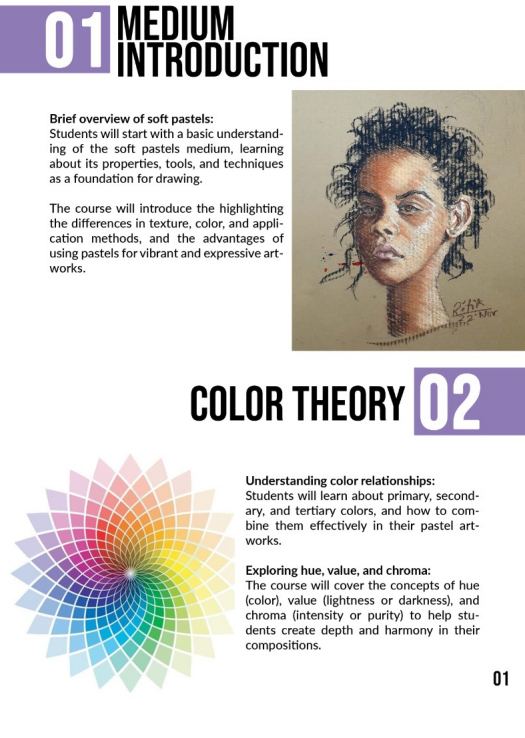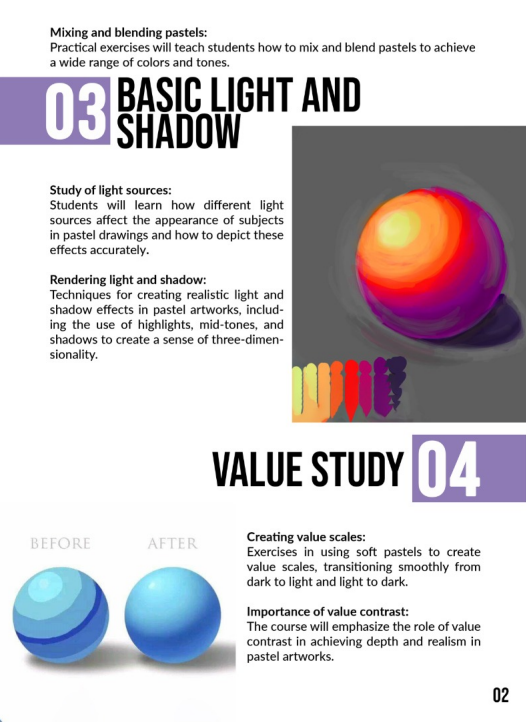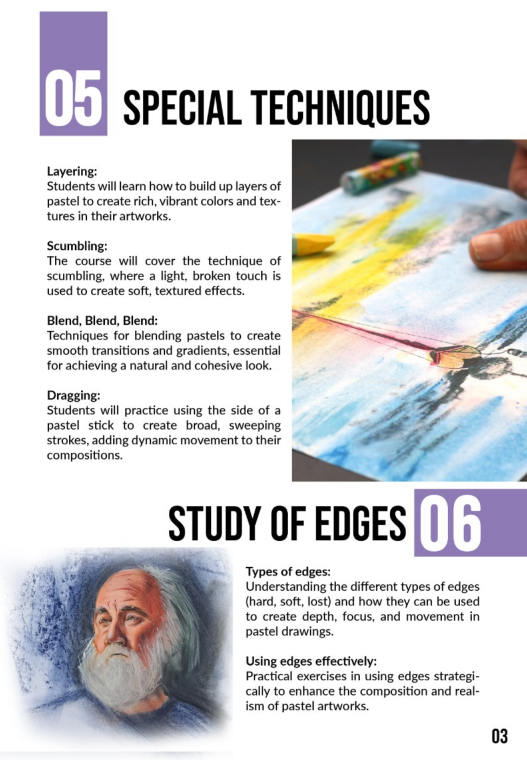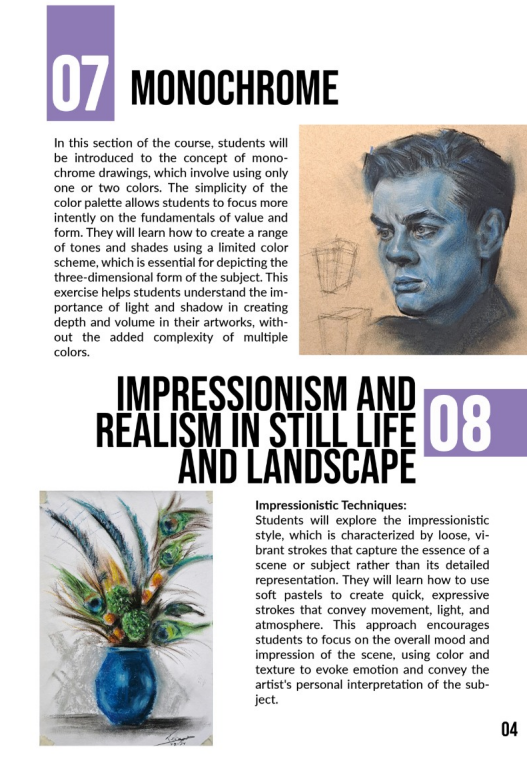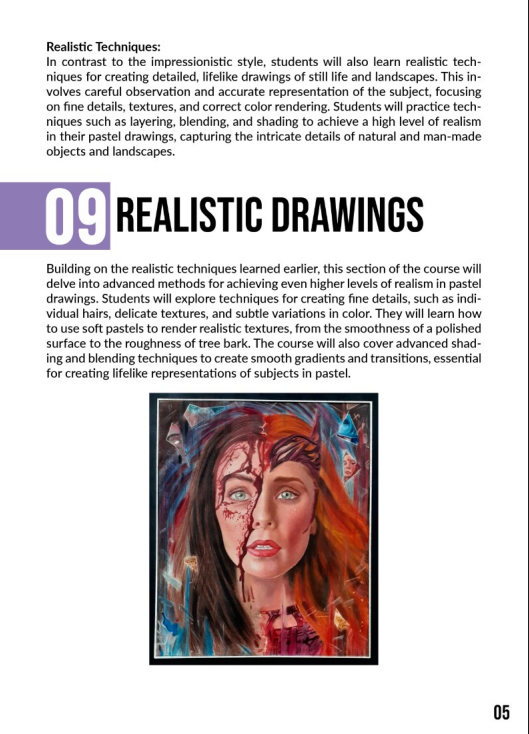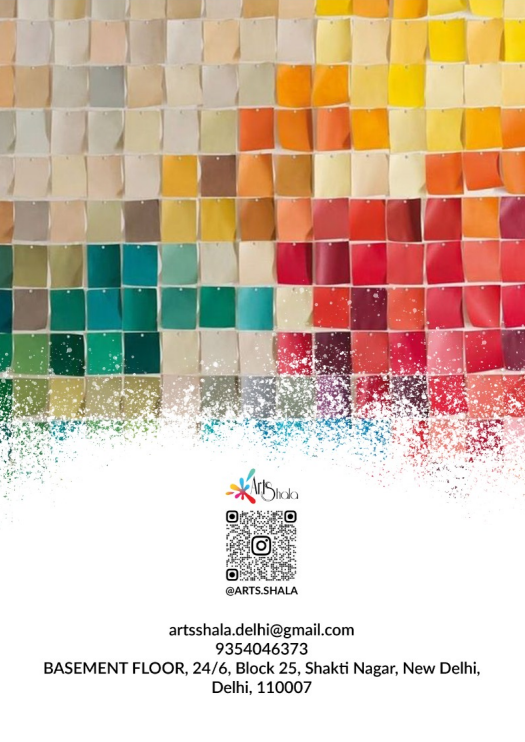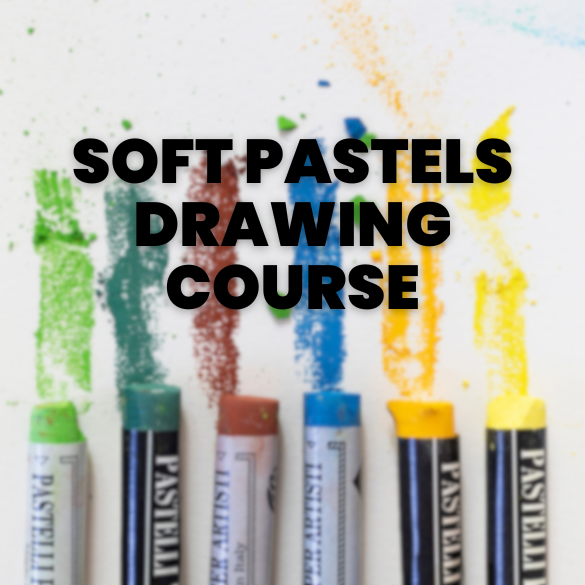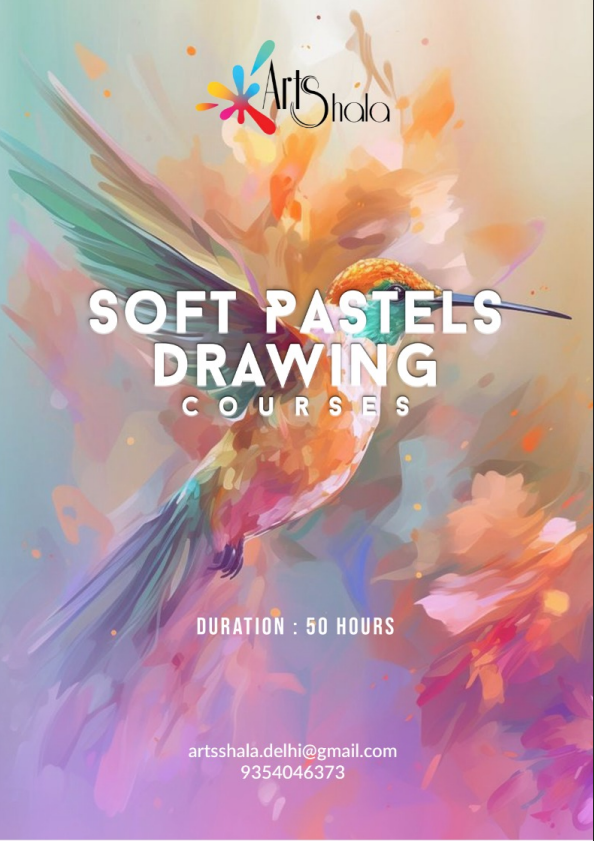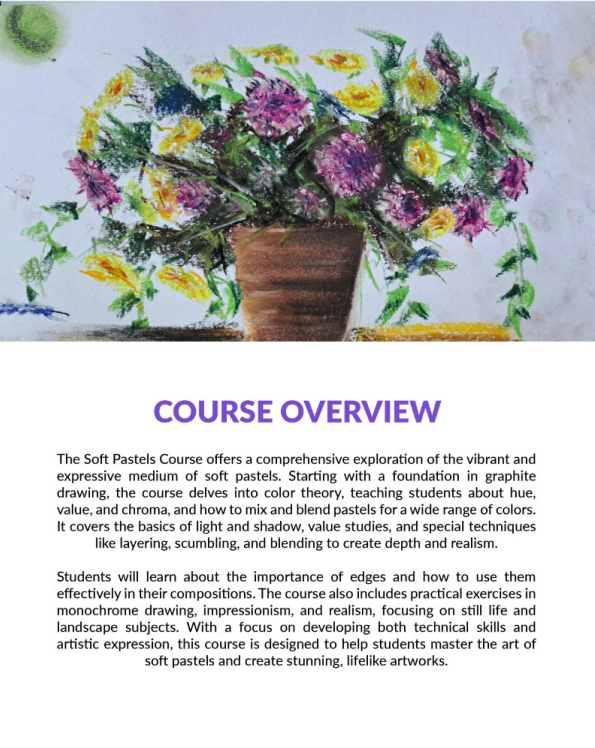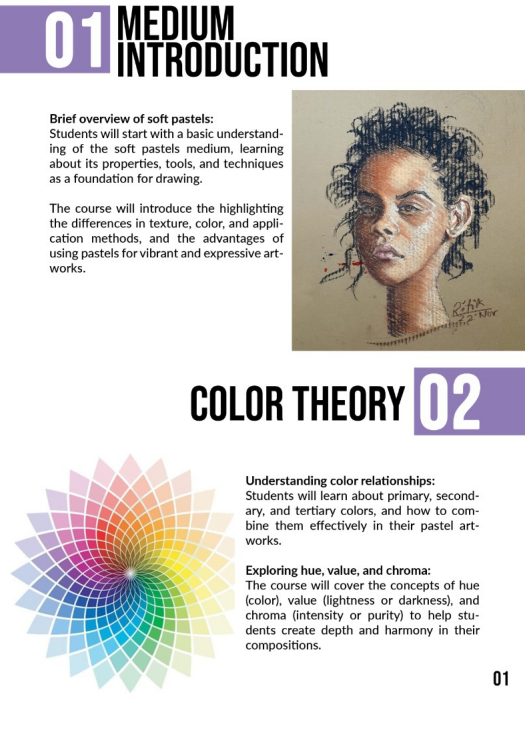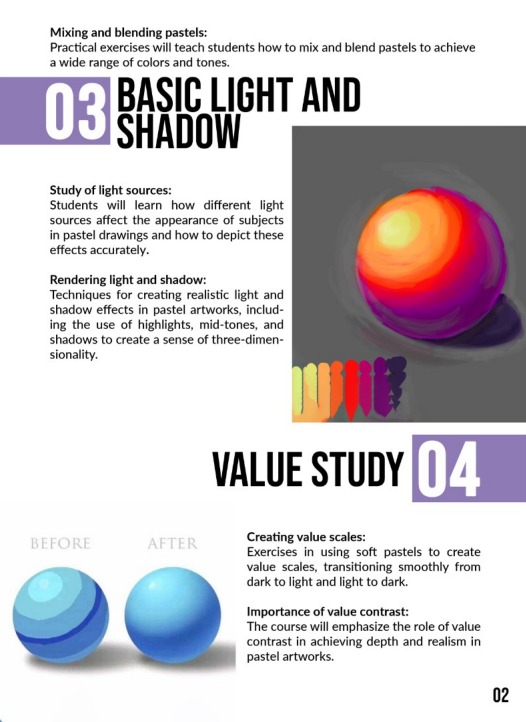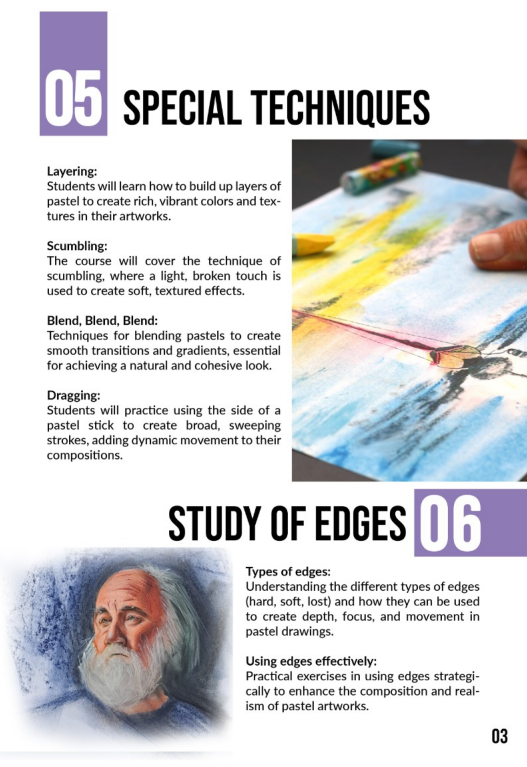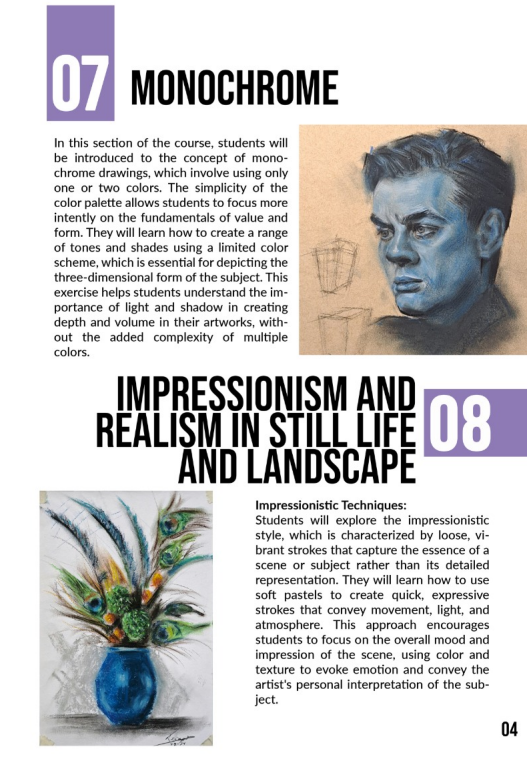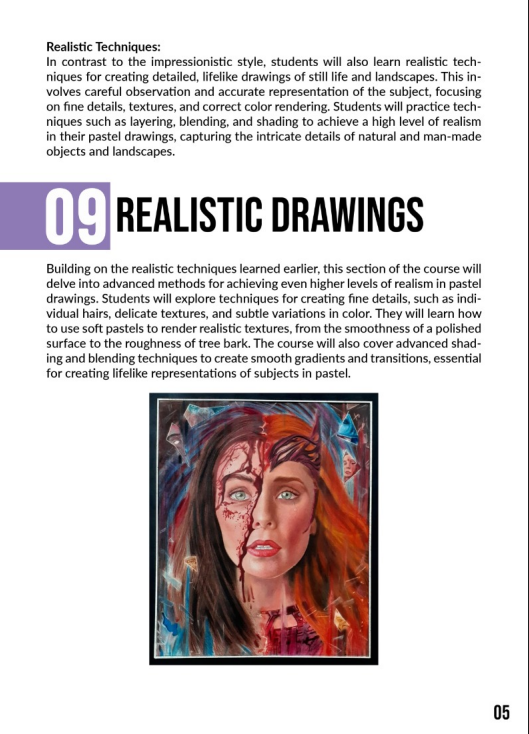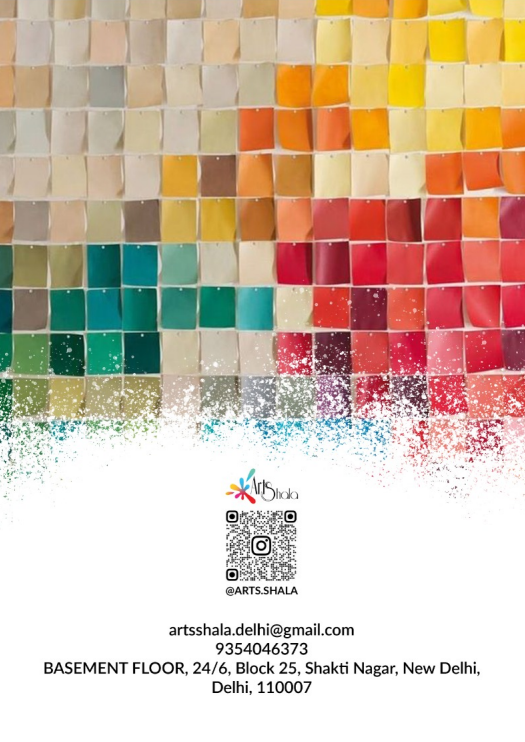The Soft Pastels Course offers a comprehensive exploration of the vibrant and expressive medium of soft pastels. Starting with a foundation in graphite drawing, the course delves into color theory, teaching students about hue, value, and chroma, and how to mix and blend pastels for a wide range of colors. It covers the basics of light and shadow, value studies, and special techniques like layering, scumbling, and blending to create depth and realism.
Students will learn about the importance of edges and how to use them effectively in their compositions. The course also includes practical exercises in monochrome drawing, impressionism, and realism, focusing on still life and landscape subjects. With a focus on developing both technical skills and artistic expression, this course is designed to help students master the art of soft pastels and create stunning, lifelike artworks.
What the Course Includes:
Graphite Medium Introduction
Brief overview of graphite: Students will start with a basic understanding of the graphite medium, learning about its properties, tools, and techniques as a foundation for drawing.
Transition to soft pastels: The course will then introduce the transition from graphite to soft pastels, highlighting the differences in texture, color, and application methods, and the advantages of using pastels for vibrant and expressive artworks.
Color Theory
Understanding color relationships: Students will learn about primary, secondary, and tertiary colors, and how to combine them effectively in their pastel artworks.
Exploring hue, value, and chroma: The course will cover the concepts of hue (color), value (lightness or darkness), and chroma (intensity or purity) to help students create depth and harmony in their compositions.
Mixing and blending pastels: Practical exercises will teach students how to mix and blend pastels to achieve a wide range of colors and tones.
Basic Light and Shadow
Study of light sources: Students will learn how different light sources affect the appearance of subjects in pastel drawings and how to depict these effects accurately.
Rendering light and shadow: Techniques for creating realistic light and shadow effects in pastel artworks, including the use of highlights, mid-tones, and shadows to create a sense of three-dimensionality.
Value Study
Creating value scales: Exercises in using soft pastels to create value scales, transitioning smoothly from dark to light and light to dark.
Importance of value contrast: The course will emphasize the role of value contrast in achieving depth and realism in pastel artworks.
Special Techniques
Layering: Students will learn how to build up layers of pastel to create rich, vibrant colors and textures in their artworks.
Scumbling: The course will cover the technique of scumbling, where a light, broken touch is used to create soft, textured effects.
Blend, Blend, Blend: Techniques for blending pastels to create smooth transitions and gradients, essential for achieving a natural and cohesive look.
Dragging: Students will practice using the side of a pastel stick to create broad, sweeping strokes, adding dynamic movement to their compositions.
Study of Edges:
Types of edges: Understanding the different types of edges (hard, soft, lost) and how they can be used to create depth, focus, and movement in pastel drawings.
Using edges effectively: Practical exercises in using edges strategically to enhance the composition and realism of pastel artworks.
Monochrome Drawings
In this section of the course, students will be introduced to the concept of monochrome drawings, which involve using only one or two colors. The simplicity of the color palette allows students to focus more intently on the fundamentals of value and form. They will learn how to create a range of tones and shades using a limited color scheme, which is essential for depicting the three-dimensional form of the subject. This exercise helps students understand the importance of light and shadow in creating depth and volume in their artworks, without the added complexity of multiple colors.
Impressionism and Realism in Still Life and Landscape
Impressionistic Techniques:
Students will explore the impressionistic style, which is characterized by loose, vibrant strokes that capture the essence of a scene or subject rather than its detailed representation. They will learn how to use soft pastels to create quick, expressive strokes that convey movement, light, and atmosphere. This approach encourages students to focus on the overall mood and impression of the scene, using color and texture to evoke emotion and convey the artist's personal interpretation of the subject.
Realistic Techniques:
In contrast to the impressionistic style, students will also learn realistic techniques for creating detailed, lifelike drawings of still life and landscapes. This involves careful observation and accurate representation of the subject, focusing on fine details, textures, and correct color rendering. Students will practice techniques such as layering, blending, and shading to achieve a high level of realism in their pastel drawings, capturing the intricate details of natural and man-made objects and landscapes.
Realistic Drawings
Building on the realistic techniques learned earlier, this section of the course will delve into advanced methods for achieving even higher levels of realism in pastel drawings. Students will explore techniques for creating fine details, such as individual hairs, delicate textures, and subtle variations in color. They will learn how to use soft pastels to render realistic textures, from the smoothness of a polished surface to the roughness of tree bark. The course will also cover advanced shading and blending techniques to create smooth gradients and transitions, essential for creating lifelike representations of subjects in pastel.


